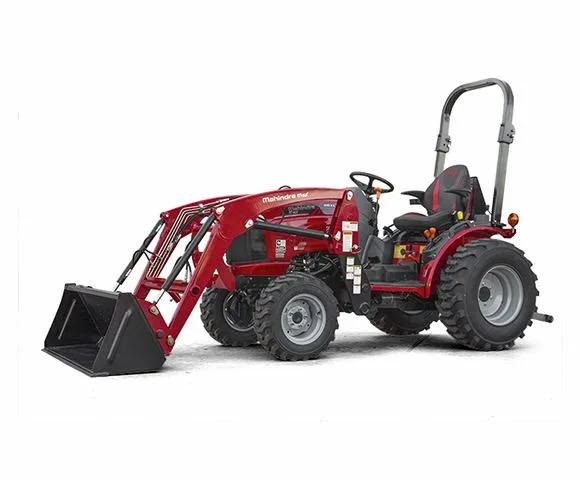1100
Meet the future in sub-compacts … the Mahindra 1100 series. They are the toughest, friendliest, and smartest tractors in the world. We challenge all weekend warriors to test their mettle. Novices will smile at an intuitive and informative cockpit. Phone app lovers will be pumped by its intelligent OJA software. Discover why the Mahindra 1100 Series offers the best value for those with 10 acres or less.
Base price starting at$16,705*
| Horsepower | 20.1 - 25.3 HP |
| Loader Lift Capacity | 794 lbs |
| Transmission | HST |
eMax
Where big performance meets compact convenience. Impressive lift capacity tackles tough jobs, while the versatile implement range fits any need —perfect for homeowners and professionals alike.
Base price starting at$16,280*
| Horsepower | 19.4 - 24 HP |
| Loader Lift Capacity | 617 - 900 lbs |
| Transmission | HST |
Max
These compact tractors offer versatility by combining the maneuverability and agility of a smaller tractor with the durability and lift capacity of a larger tractor. Work in tight areas other compact tractors can't while possessing plenty of power for tough tasks.
Base price starting at$23,947*
| Horsepower | 25.9 HP |
| Loader Lift Capacity | 1402 lbs |
| Transmission | Shuttle & HST |
2600
Combining exceptional user-friendliness with robust power, these tractors effortlessly handle general farming and landscaping tasks. Get the best of both worlds- Quality and essentials, plus comfort features designed to simplify your workday.
Base price starting at$34,272*
| Horsepower | 37.4 - 70 HP |
| Loader Lift Capacity | 1634 - 3122 lbs |
| Transmission | Shuttle, PST & HST |
5100
Tough-as-nails, these robust tractors provide professional-grade strength. Customizable for diverse tasks, ideal for agriculture, maintenance, and industrial or construction sites, ensuring versatile performance.
Base price starting at$40,359*
| Horsepower | 45 - 55 HP |
| Loader Lift Capacity | 3245 lbs/1472 kg |
| Transmission | Synchro Shuttle |












